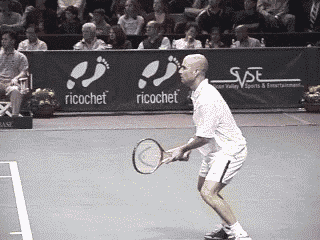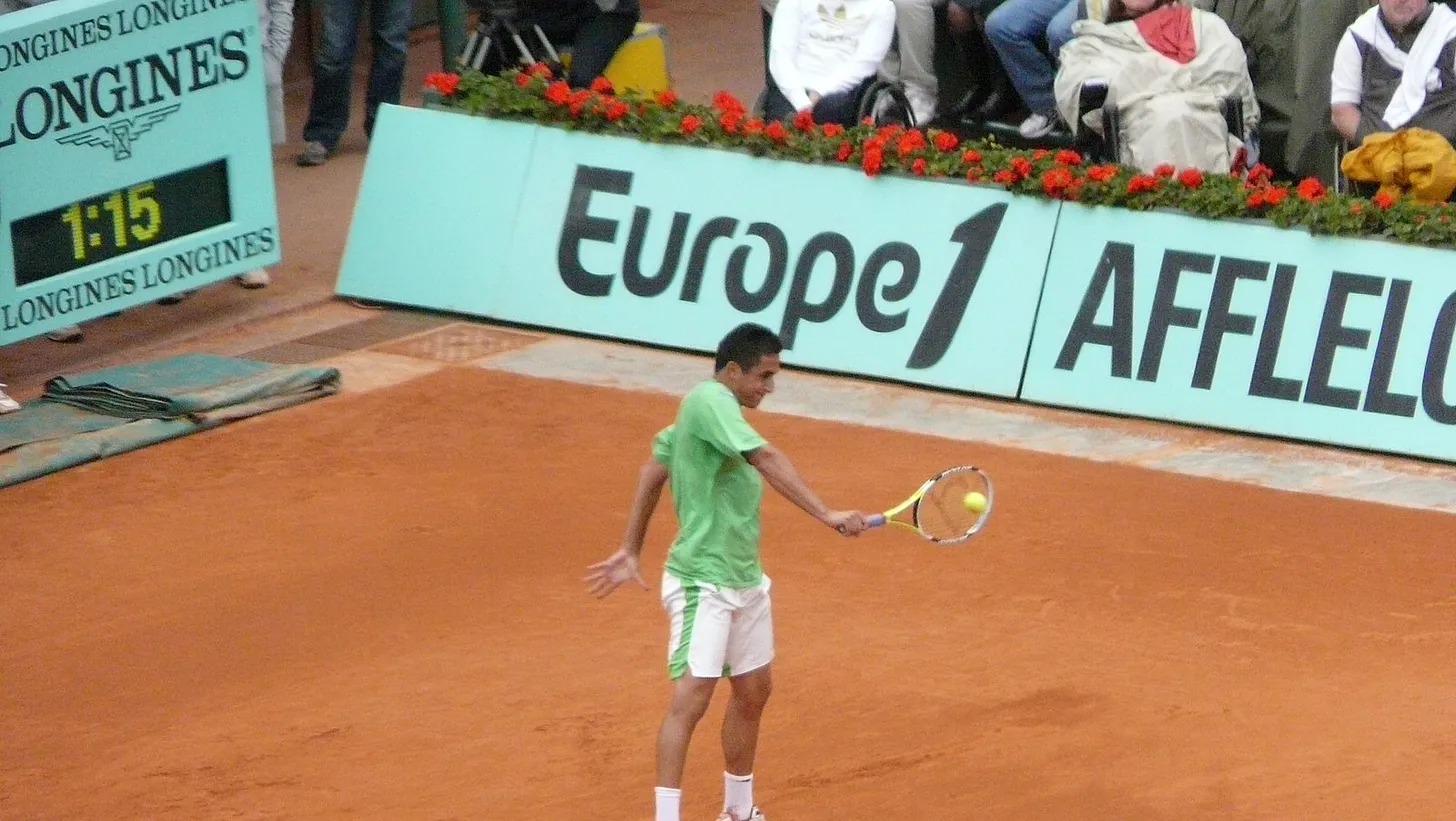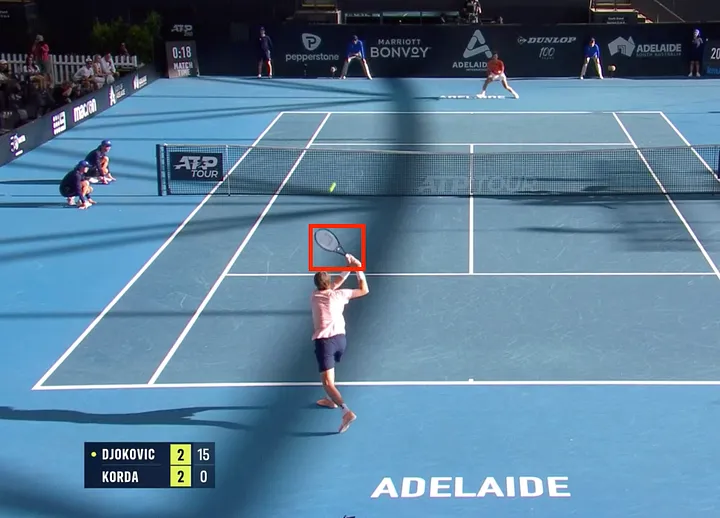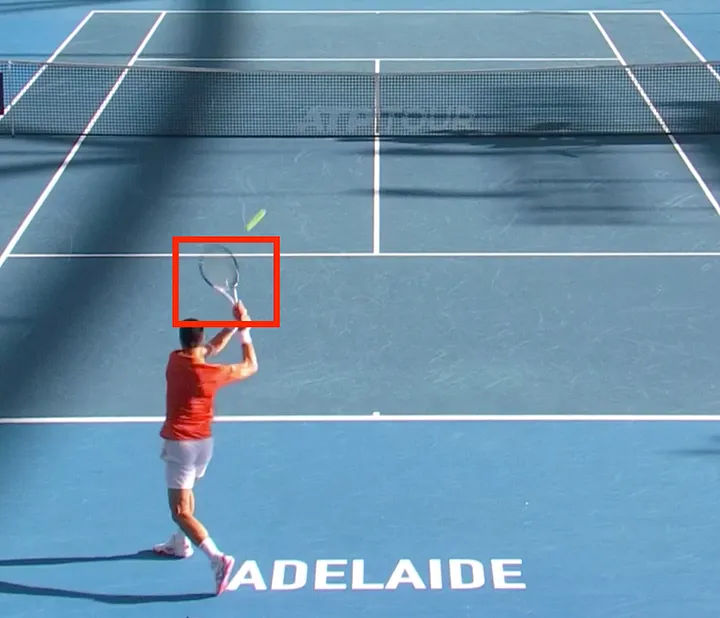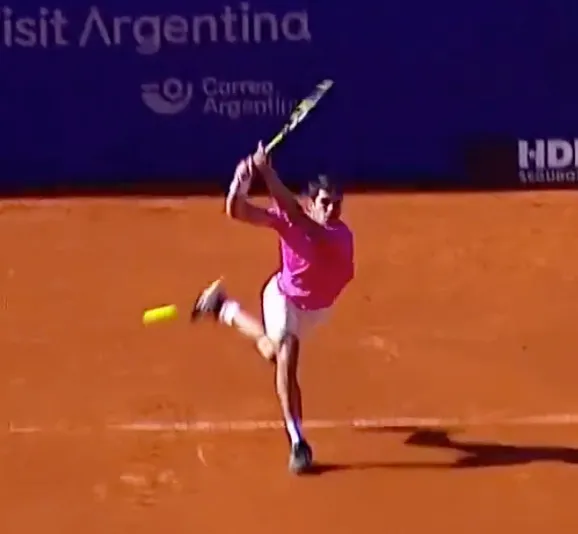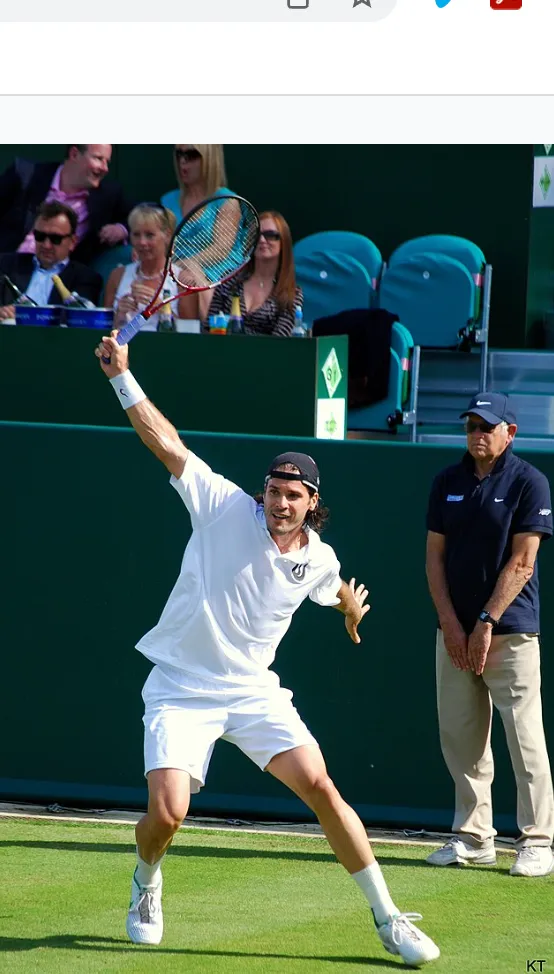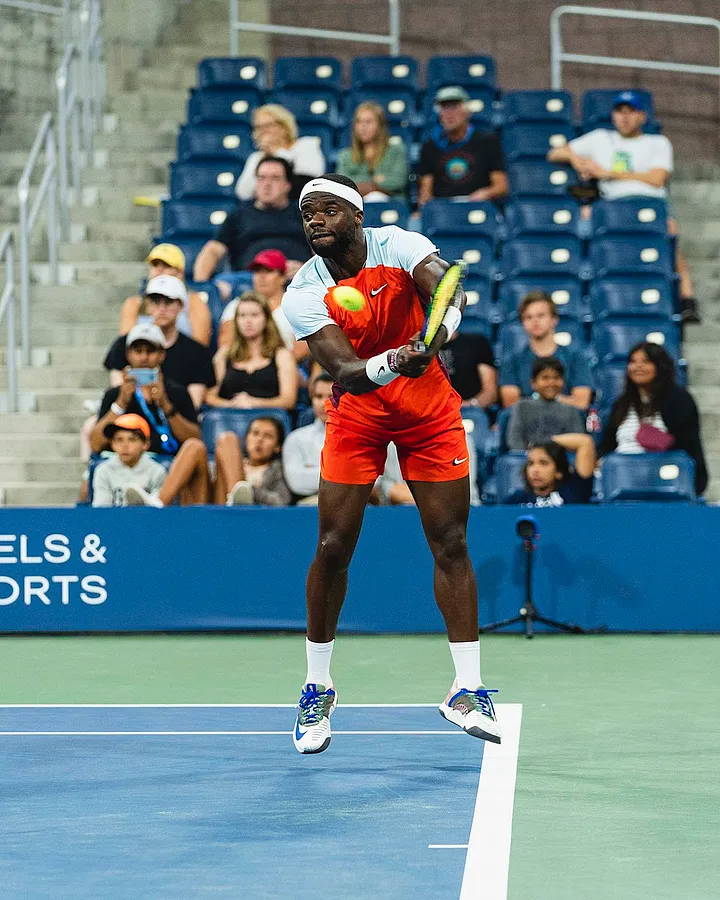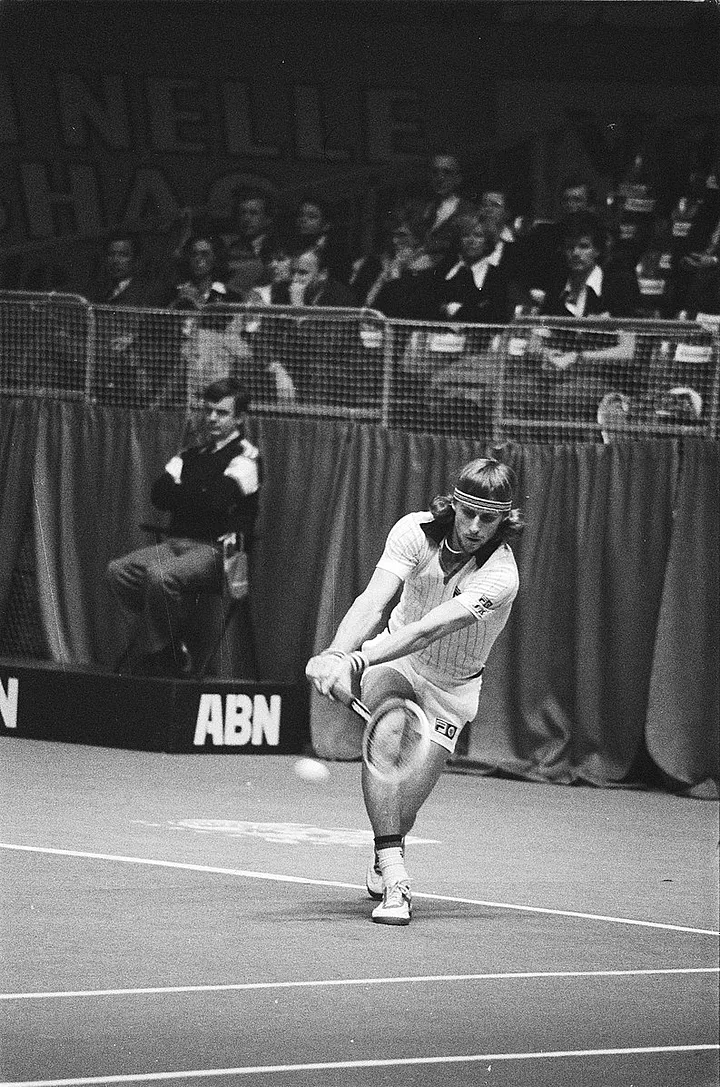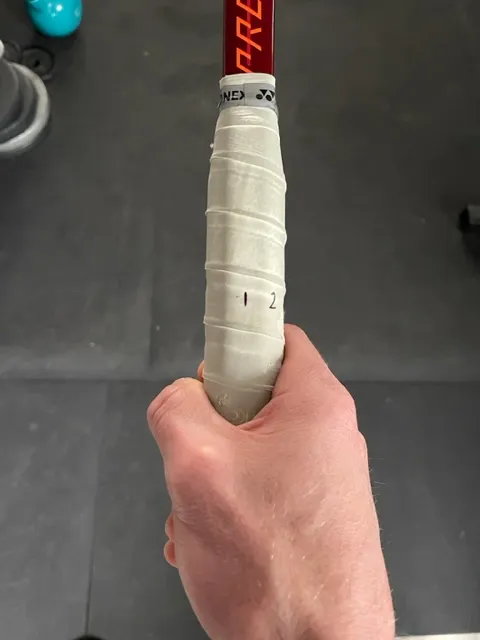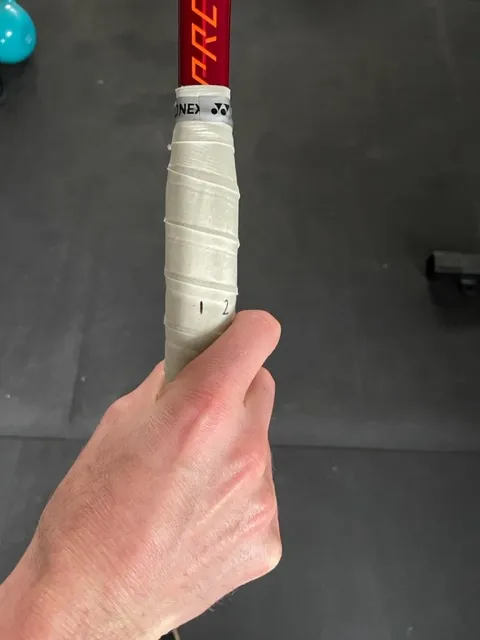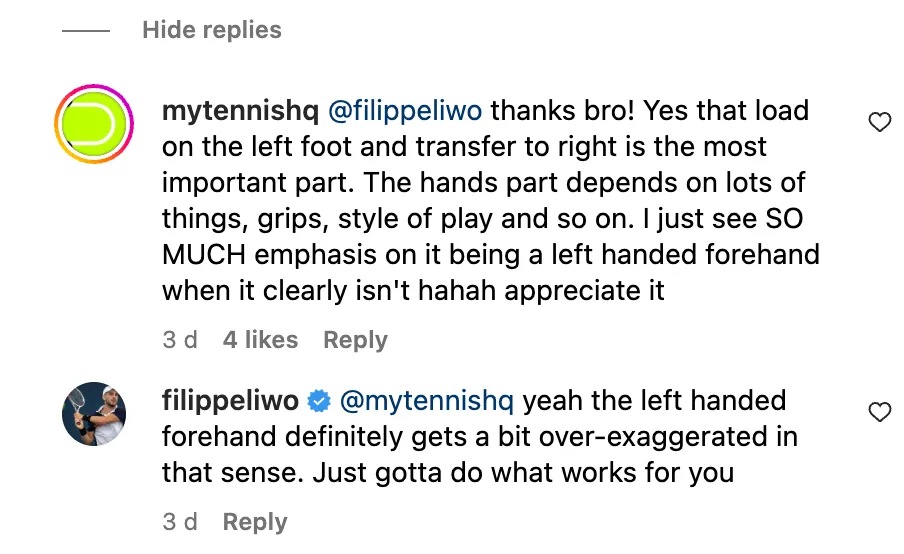There’s a recent Instagram video by Karue Sell (current coach of ATP #69 Marcos Giron) from My Tennis HQ that highlighted a feel for the two-handed backhand that ran counter to common tennis advice: use your right hand more like a one-handed backhand.
1
Check out an in-depth lesson below:
What’s interesting here is that Sell says he got a lot of pushback from couch experts on this tip. I’m writing this piece because, like Sell (or the old Sell), I also tend (or used to) to think of the backhand as a left-hand shot (for a righty). After watching his video a few weeks ago on using the right hand more I experimented with this feel on some of my clients who were struggling with their two-hand backhand. It worked better for some than others, which is pretty normal, but I think the topic deserves an in-depth examination of why this advice is great for certain backhand swings. After a few weeks of turning this over in my head, I think I’ve come to a decent explanation, or at least a solid framework to start from. Let’s dig in.
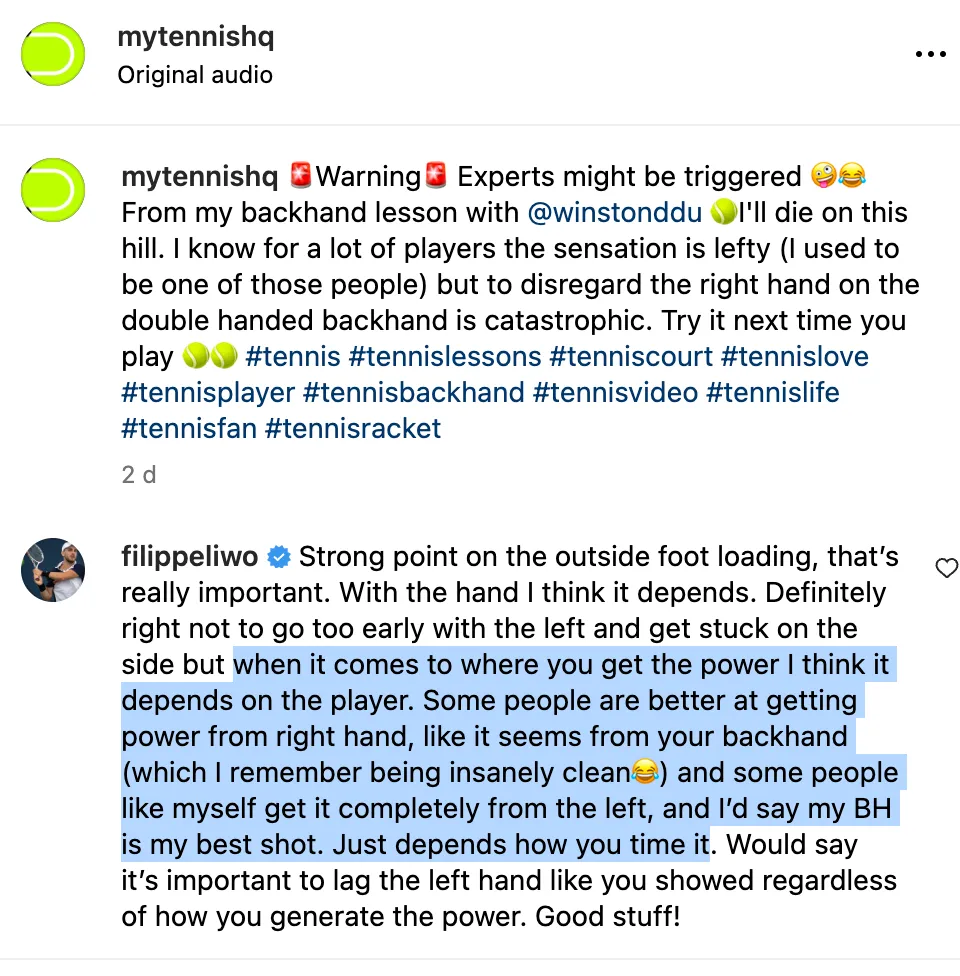
Then he finishes with “just depends on how you time it” which is typically ambiguous; language is not well suited to accurately convey motor patterns or “feels”. What I think he means is, it depends on how you swing and where you contact the ball.
Let’s take a look at three hitting arm structures that can occur on a two-hand backhand: (a) a straight left arm with a bent right arm; (b) a double-bend; and (c) a straight right arm.
Note: these are tendencies. Players that I group in one structure will very often hit with another structure depending on the type of shot they are trying to hit, the incoming ball, their positioning, etc. For example, I group Djokovic in the “straight left arm with bent right arm” structure, but very often, perhaps even more often, he will hit with a double bend. So keep in mind that categories are not discrete and that player groupings are loose/fluid. I grouped them roughly and based on what I think they tend to produce on a neutral rally ball where they aren’t rushed, cramped, trying to roll an angle or block a return, etc.
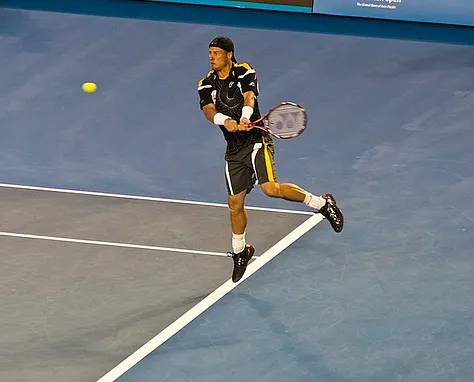
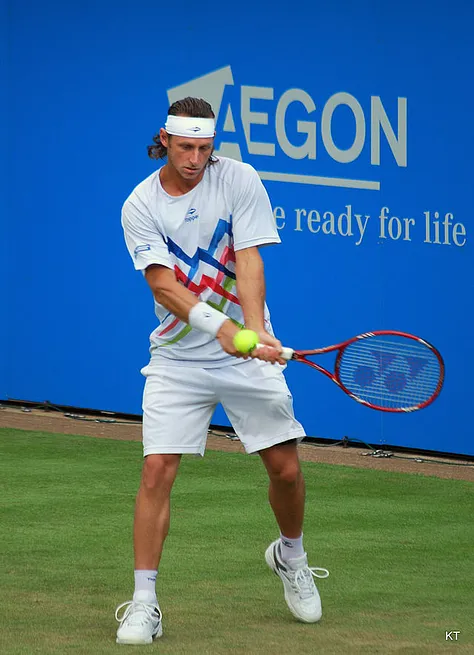
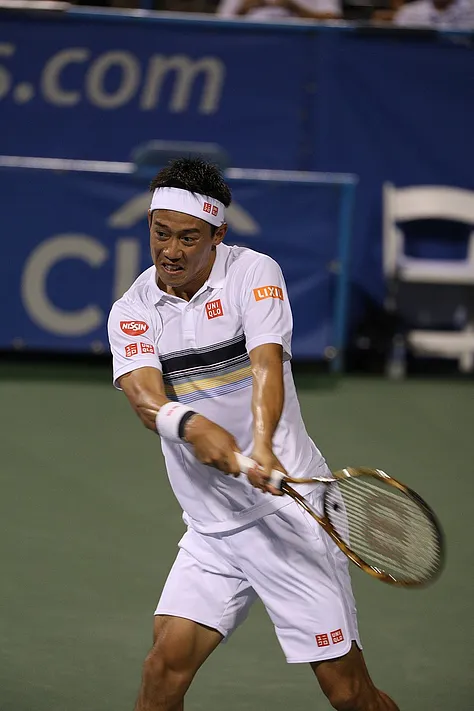
L to R: Hewitt, Nalbandian, Nishikori. Three all-time great backhands. Note the straightened left arm around contact.
This is perhaps the most common arm structure on the backhand and one that tends to occur in some of the best backhands of all time. I’d argue Nalbandian, Djokovic, Safin, Soderling, Nishikori, Hewitt, Alcaraz, and a host of others fit in this box more than any other.
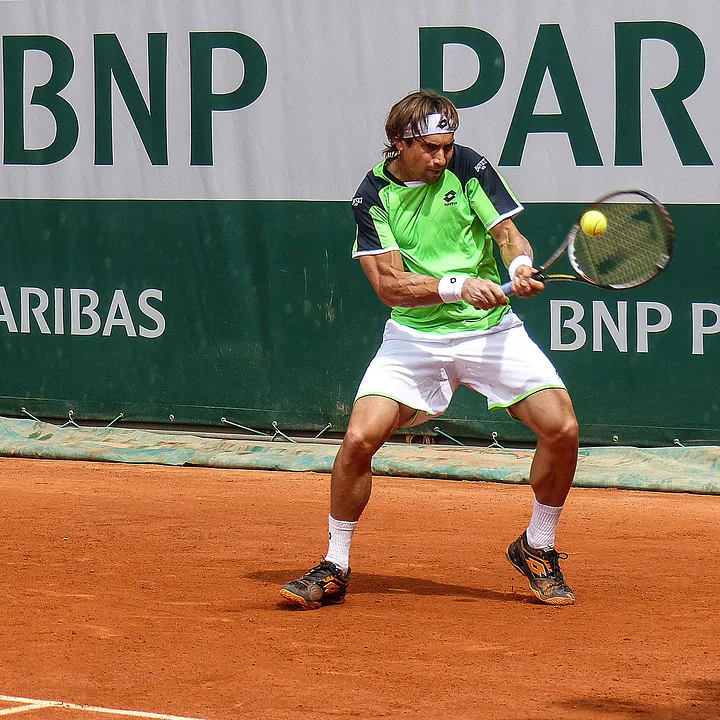
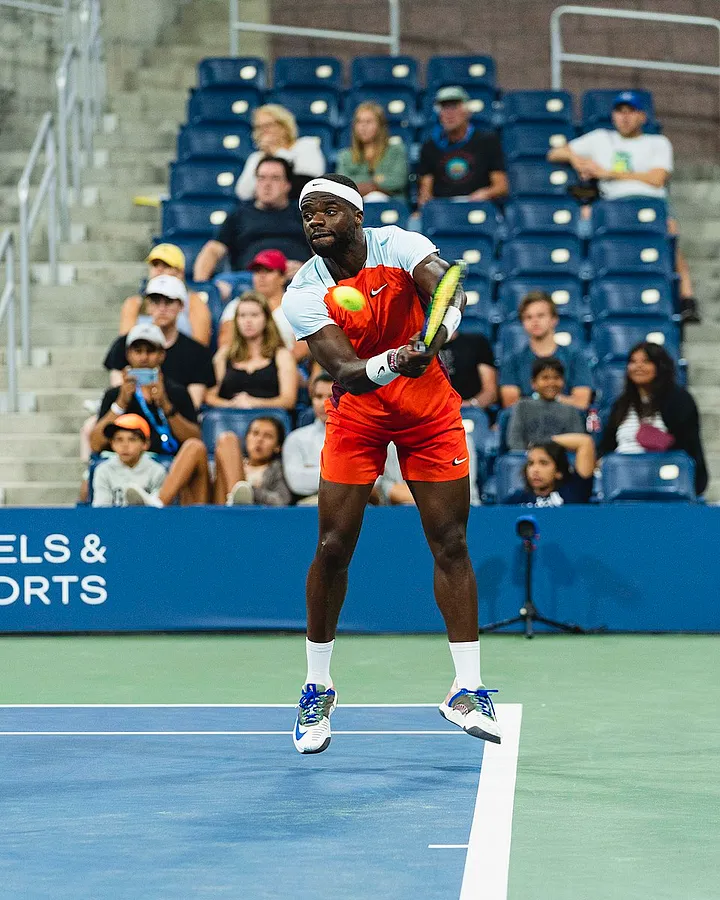
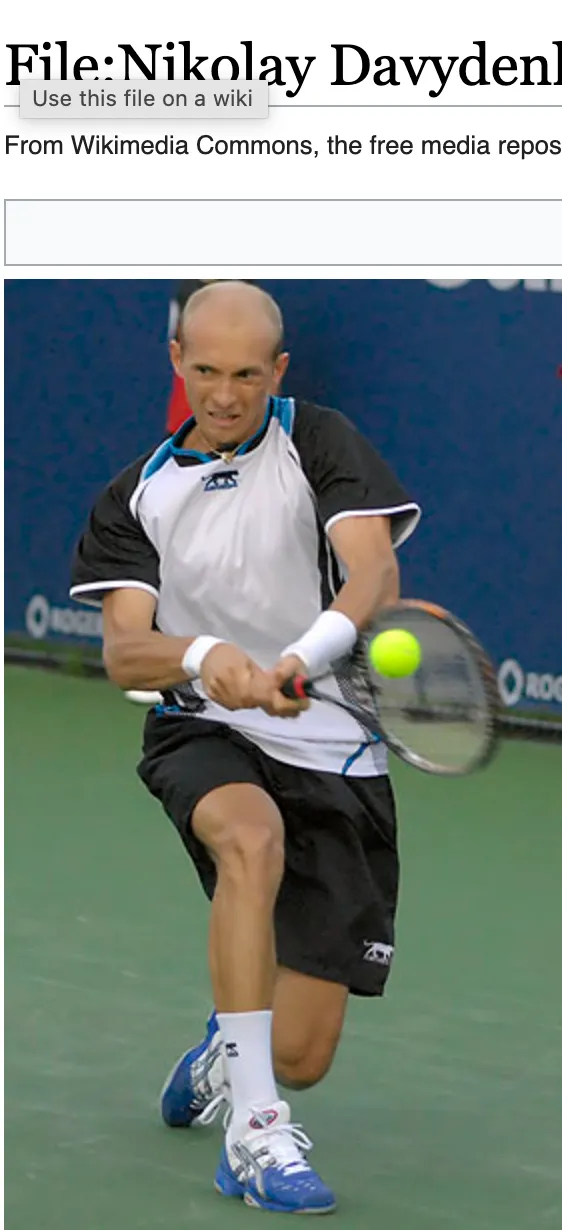
Clockwise from top left: David Ferrer, Frances Tiafoe, Nikolay Davydenko. Note how both elbows are bent and contact is made further back or less in front of the body.
The double-bend arm structure is more common on the WTA tour but features a host of men’s players including Zverev, Ferrer, Davydenko, Sinner, Medvedev, Rune, Cilic, Tomic, and Murray.
I would argue that our Instagram commenter from above, Filip Peliwo, fits in this box also. You can catch a glimpse of his backhand here.
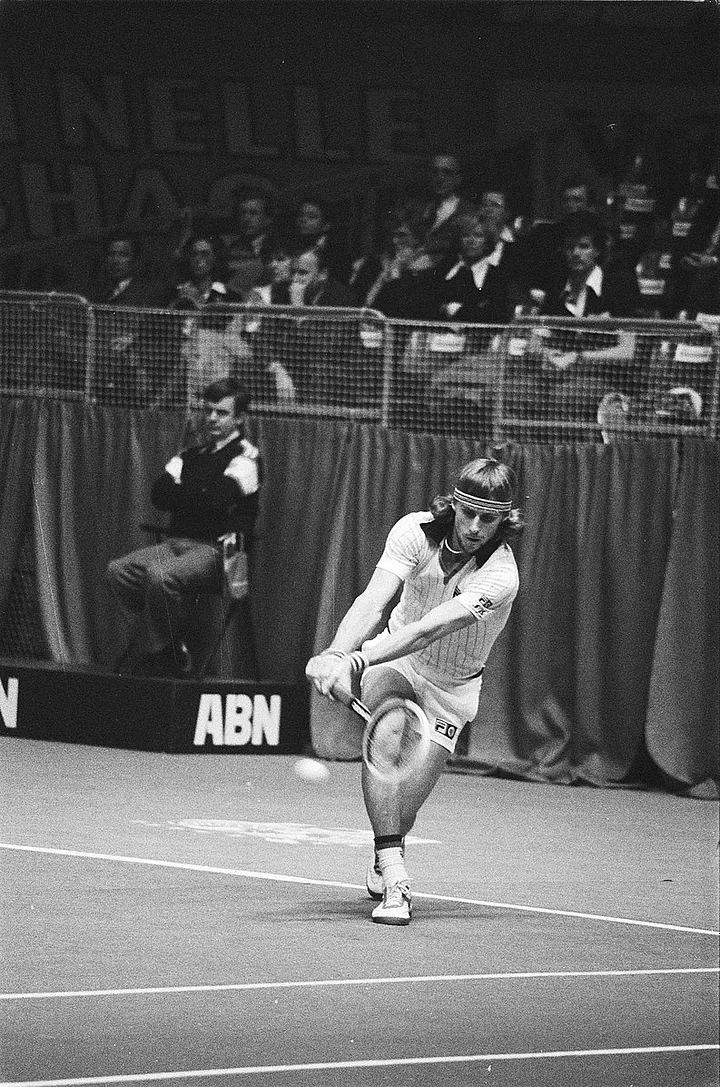
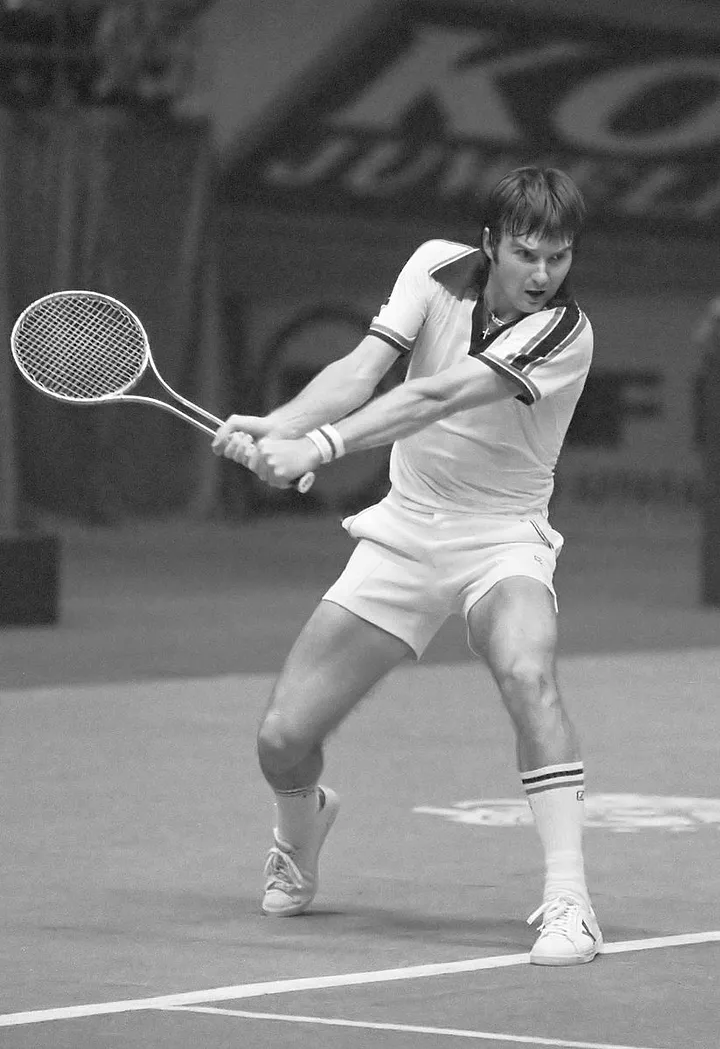
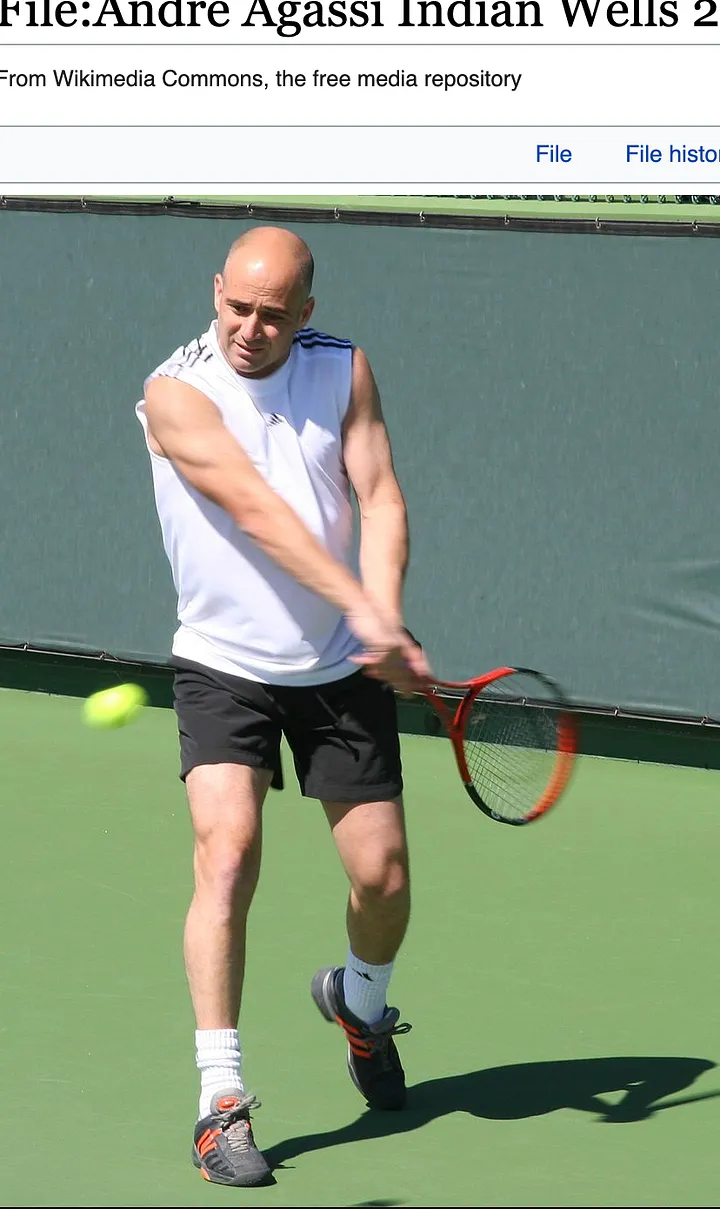
The straight right arm (left for Connors and Nadal) is less common and seen in Agassi, Borg, Courier, Connors, and Nadal.
4
Generally we see the hips and chest more open around contact and both arms straighten through contact.
Once again keep in mind these categories are fluid. If you think I’ve miscategorised a certain player: I hear you. I’m just pointing out that there are different swing structures out there and players tend to hit certain ones more than others, or perhaps more accurately, certain players rarely hit certain types (for example, Medvedev would rarely hit with a straight right arm, Agassi would rarely have hit with a double-bend, etc.).
So, what stroke tends to be dominated—or felt—by the left hand, and which by the right?
This is where it can get a little messy and dependent on multiple variables, two of which I’m going to focus on: (a) grips; and (b) hips.
1
Check out an in-depth lesson below:
What’s interesting here is that Sell says he got a lot of pushback from couch experts on this tip. I’m writing this piece because, like Sell (or the old Sell), I also tend (or used to) to think of the backhand as a left-hand shot (for a righty). After watching his video a few weeks ago on using the right hand more I experimented with this feel on some of my clients who were struggling with their two-hand backhand. It worked better for some than others, which is pretty normal, but I think the topic deserves an in-depth examination of why this advice is great for certain backhand swings. After a few weeks of turning this over in my head, I think I’ve come to a decent explanation, or at least a solid framework to start from. Let’s dig in.
Hitting Arm Structures
In the comments of the video a top pro, Filip Peliwo, offers his feel that is counter to Sell’s (and typical of much coaching advice): he uses his left hand more (highlighted).
Then he finishes with “just depends on how you time it” which is typically ambiguous; language is not well suited to accurately convey motor patterns or “feels”. What I think he means is, it depends on how you swing and where you contact the ball.
Let’s take a look at three hitting arm structures that can occur on a two-hand backhand: (a) a straight left arm with a bent right arm; (b) a double-bend; and (c) a straight right arm.
Note: these are tendencies. Players that I group in one structure will very often hit with another structure depending on the type of shot they are trying to hit, the incoming ball, their positioning, etc. For example, I group Djokovic in the “straight left arm with bent right arm” structure, but very often, perhaps even more often, he will hit with a double bend. So keep in mind that categories are not discrete and that player groupings are loose/fluid. I grouped them roughly and based on what I think they tend to produce on a neutral rally ball where they aren’t rushed, cramped, trying to roll an angle or block a return, etc.
Straight left arm with a bent right arm



L to R: Hewitt, Nalbandian, Nishikori. Three all-time great backhands. Note the straightened left arm around contact.
This is perhaps the most common arm structure on the backhand and one that tends to occur in some of the best backhands of all time. I’d argue Nalbandian, Djokovic, Safin, Soderling, Nishikori, Hewitt, Alcaraz, and a host of others fit in this box more than any other.
Double-bend



Clockwise from top left: David Ferrer, Frances Tiafoe, Nikolay Davydenko. Note how both elbows are bent and contact is made further back or less in front of the body.
The double-bend arm structure is more common on the WTA tour but features a host of men’s players including Zverev, Ferrer, Davydenko, Sinner, Medvedev, Rune, Cilic, Tomic, and Murray.
I would argue that our Instagram commenter from above, Filip Peliwo, fits in this box also. You can catch a glimpse of his backhand here.
Straight right-arm



The straight right arm (left for Connors and Nadal) is less common and seen in Agassi, Borg, Courier, Connors, and Nadal.
4
Generally we see the hips and chest more open around contact and both arms straighten through contact.
Once again keep in mind these categories are fluid. If you think I’ve miscategorised a certain player: I hear you. I’m just pointing out that there are different swing structures out there and players tend to hit certain ones more than others, or perhaps more accurately, certain players rarely hit certain types (for example, Medvedev would rarely hit with a straight right arm, Agassi would rarely have hit with a double-bend, etc.).
So, what stroke tends to be dominated—or felt—by the left hand, and which by the right?
This is where it can get a little messy and dependent on multiple variables, two of which I’m going to focus on: (a) grips; and (b) hips.
Last edited:

